The Use of the BIM Approach from the Conceptual Planning to the Construction Phase: The Case Study of the SHiP Experiment
Abstract
1. Introduction
2. General Overview of the SHIP Project
3. Proposed BIM Workflow
4. Integrated Design Development of the Decay Volume
4.1. BIM Geometrical Model
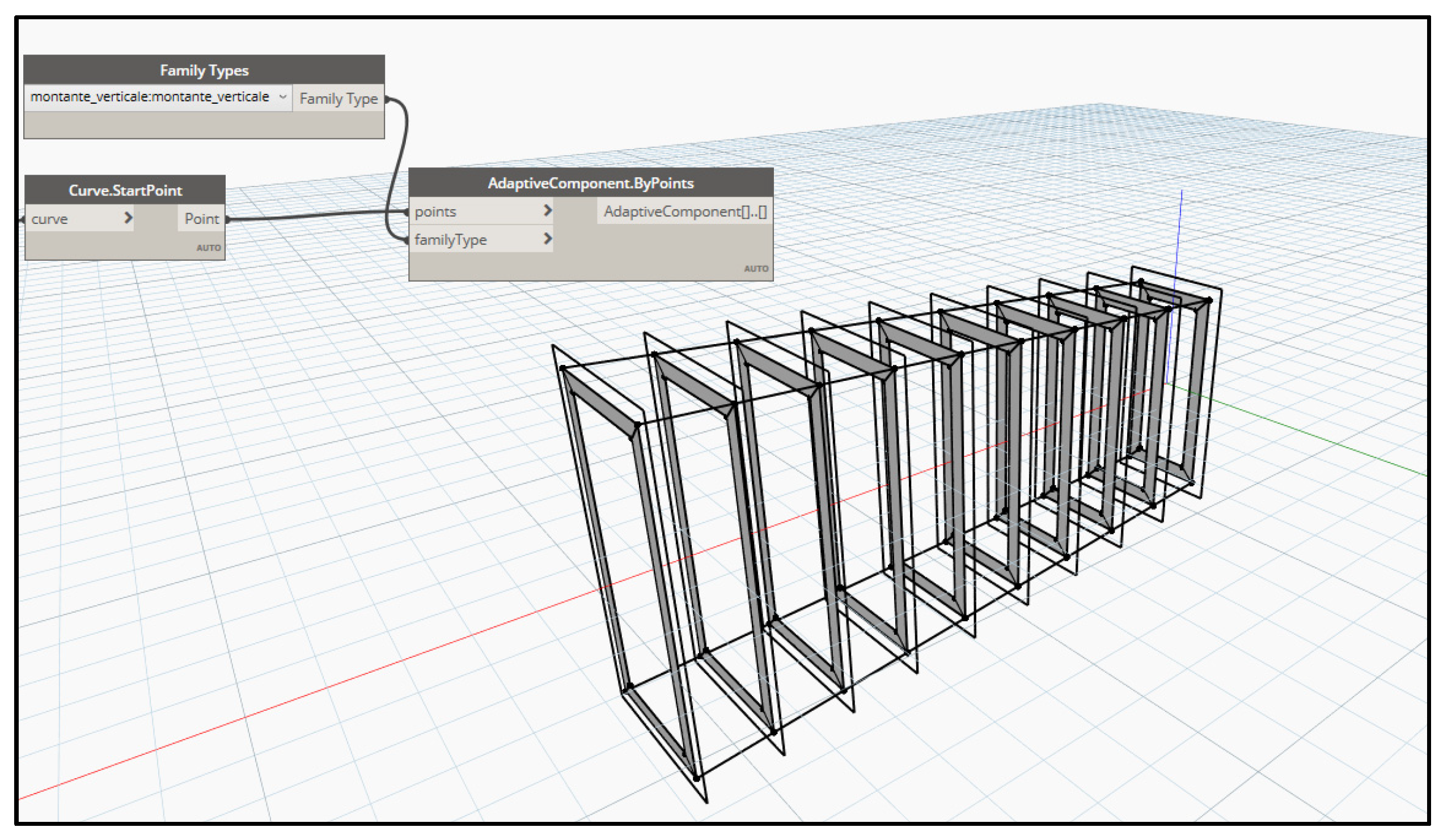
4.2. BIM Structural Model
4.3. BIM Model Rapid Visualisation
4.4. Issues Solved through the BIM Methodology
5. Integrated Construction Design of the Decay Volume (DV)
5.1. Factory Production
5.2. In-Situ Assembly Procedures
5.3. BIM Construction Scheduling
5.4. Interferences between Construction Tasks
5.5. Repository of All the Information for All the Stakeholders of the Project
5.6. Summary of Issues Solved through the BIM Methodology
6. Conclusions
Supplementary Materials
Author Contributions
Funding
Institutional Review Board Statement
Informed Consent Statement
Data Availability Statement
Acknowledgments
Conflicts of Interest
References
- Bonivento, W.; Boyarsky, A.; Dijkstra, H.; Egede, U.; Ferro-Luzzi, M.; Goddard, B.; Golutvin, A.; Gorbunov, D.; Jacobsson, R.; Panman, J.; et al. Proposal to search for heavy neutral leptons at the SPS. arXiv 2013, arXiv:1310.1762. [Google Scholar]
- Anelli, M.; Aoki, S.; Arduini, G.; Back, J.J.; Bagulya, A.; Baldini, W.; Baranov, A.; Barker, G.J.; Barsuk, S.; Battistin, M.; et al. A facility to Search for Hidden Particles (SHiP) at the CERN SPS. arXiv 2015, arXiv:1504.04956. [Google Scholar]
- Akmete, A.; Alexandrov, A.; Anokhina, A.; Aoki, S.; Atkin, E.; Azorskiy, N.; Back, J.; Bagulya, A.; Baranov, A.; Barker, G.; et al. The active muon shield in the SHiP experiment. J. Instrum. 2017, 12, P05011. [Google Scholar] [CrossRef][Green Version]
- Ahdida, C.; Albanese, R.; Alexandrov, A.; Anokhina, A.; Aoki, S.; Arduini, G.; Atkin, E.; Azorskiy, N.; Back, J.; Bagulya, A.; et al. The experimental facility for the Search for Hidden Particles at the CERN SPS. J. Instrum. 2019, 14, P03025. [Google Scholar] [CrossRef]
- Ahdida, C.; Albanese, R.; Alexandrov, A.; Anokhina, A.; Aoki, S.; Arduini, G.; Atkin, E.; Azorskiy, N.; Back, J.J.; Bagulya, A.; et al. SHiP Experiment|Progress Report. CERN-SPSC-2019-010. 2019. Available online: https://cds.cern.ch/record/2654870 (accessed on 31 January 2021).
- AIA Contract Document G202. In Building Information Modeling Protocol Form; AIA: Washington, DC, USA, 2013.
- Messner, J.; Anumba, C.; Dubler, C.; Goodman, S.; Kasprzak, C.; Kreider, R.; Leicht, R.; Saluja, C.; Zikic, N. BIM Project Execution Planning Guide, Version 2.2–Computer Integrated Construction Research Program; The Pennsylvania State University: University Park, PA, USA, 2019. [Google Scholar]
- Eastman, C.; Teicholz, P.; Sacks, R.; Liston, K. BIM Handbook–A Guide to Building Information Modeling for Owners, Managers, Designers, Engineers, and Contractors; John Wiley & Sons Inc.: Hoboken, NJ, USA, 2011. [Google Scholar]
- Salzano, A. Metodologie BIM per la Progettazione Integrata di Interventi di Riqualificazione e Rinforzo Strutturale Orientati alla Sostenibilità Ambientale. Ph.D. Thesis, University of Naples Federico II, Naples, Italy, 2015. (In Italian). [Google Scholar]
- Ahdida, C.; Albanese, R.; Alexandrov, A.; Anokhina, A.; Aoki, S.; Arduini, G.; Atkin, E.; Azorskiy, N.; Back, J.; Bagulya, A.; et al. Fast simulation of muons produced at the SHiP experiment using Generative Adversarial Networks. J. Instrum. 2019, 14, P11028. [Google Scholar] [CrossRef]
- Ahdida, C.; Akmete, A.; Albanese, R.; Alexandrov, A.; Anokhina, A.; Aoki, S.; Arduini, G.; Atkin, E.; Azorskiy, N.; Back, J.J.; et al. Measurement of the muon flux from 400 GeV/c protons interacting in a thick molybdenum/tungsten target. Eur. Phys. J. C 2020, 80, 1–11. [Google Scholar] [CrossRef]
- Ehlert, M.; Hollnagel, A.; Korol, I.; Korzenev, A.; Lacker, H.; Mermod, P.; Schliwinski, J.; Shihora, L.; Venkova, P.; Wurm, M. Proof-of-principle measurements with a liquid-scintillator detector using wavelength-shifting optical modules. J. Instrum. 2019, 14, P03021. [Google Scholar] [CrossRef]
- Lin, Y.-C.; Jung, S.; Su, Y.-C. Construction database-supported and BIM-based interface communication and management: A pilot project. Adv. Civ. Eng. 2019, 2019, 8367131. [Google Scholar] [CrossRef]
- Lin, Y.-C.; Lin, C.-P.; Shueh, T.-S.; Hu, H.-T. Collaboration-Based BIM Model Development Management System for General Contractors in Infrastructure Projects. J. Adv. Transp. 2020, 2020, 8834389. [Google Scholar] [CrossRef]
- Qiu, Q.; Zhou, X.; Zhao, J.; Yang, Y.; Tian, S.; Wang, J.; Liu, J.; Liu, H. From sketch BIM to design BIM: An element identification approach using Industry Foundation Classes and object recognition. Build. Environ. 2021, 188, 107423. [Google Scholar] [CrossRef]
- Dynamo. Autodesk Dynamo. 2021. Available online: https://dynamobim.org/credits/ (accessed on 31 January 2021).
- Revit. Autodesk Revit Architecture, Developer Autodesk Inc. 2021. Available online: https://www.autodesk.com/products/revit/overview (accessed on 31 January 2021).
- Robot. Autodesk Robot Structural Analysis Professional, Developer Autodesk Inc. 2019. Available online: https://www.autodesk.com/products/robot-structural-analysis/overview (accessed on 31 January 2021).
- Navisworks. Autodesk Navisworks, developer Autodesk Inc. 2021. Available online: https://www.autodesk.com/products/navisworks/overview (accessed on 31 January 2021).
- Infraworks. Autodesk Infraworks. 2019. Available online: https://help.autodesk.com/view/INFMDR/ITA/ (accessed on 31 January 2021).
- Catia. Version 3d Experience, Dasault Systemes, Developer Autodesk Inc. 2019. Available online: https://www.autodesk.com/products/character-generator/overview (accessed on 31 January 2021).
- Microsoft Project 365. Developer Microsoft Corporation. 2021. Available online: https://www.microsoft.com/en-us/microsoft-365/project/project-management-software (accessed on 31 January 2021).
- Autodesk BIM 360. Autodesk BIM 360, Developer Autodesk Inc. 2021. Available online: https://www.autodesk.com/products/bim-collaborate/overview (accessed on 31 January 2021).
- Lopez, R.; Chong, H.Y.; Wang, X.; Graham, J. Technical review: Analysis and appraisal of four-dimensional building information modeling usability in construction and engineering projects. J. Constr. Eng. Manag. 2016, 142, 06015005. [Google Scholar] [CrossRef]
- Park, J.; Cai, H.; Dunston, P.S.; Ghasemkhani, H. Database-supported and web-based visualization for daily 4D BIM. J. Constr. Eng. Manag. 2017, 143, 04017078. [Google Scholar] [CrossRef]
- Song, J.; Migliaccio, G.C.; Wang, G.; Lu, H. Exploring the Influence of System Quality, Information Quality, and External Service on BIM User Satisfaction. J. Manag. Eng. 2017, 33, 04017036. [Google Scholar] [CrossRef]
- Ma, X.; Xiong, F.; Olawumi, T.O.; Dong, N.; Chan, A.P. Conceptual framework and roadmap approach for integrating BIM into lifecycle project management. J. Manag. Eng. 2018, 36, 05018011. [Google Scholar] [CrossRef]
- Hernandez, C.R.B. Thinking parametric design: Introducing parametric Gaudi. Des. Stud. 2006, 27, 309–324. [Google Scholar] [CrossRef]
- Miano, A.; Fiorillo, A.; Salzano, A.; Prota, A.; Jacobsson, R. The structural design of the decay volume for the Search for Hidden Particles (SHIP) project. Arch. Civ. Mech. Eng. 2021, 21, 3. [Google Scholar] [CrossRef]
- EN 1990; Eurocode 0: Basis of Structural Design. European Committee for Standardization: Brussels, Belgium, 2002.
- EN 1998-1; Eurocode 8: Design of Structures for Earthquake Resistance–Part 1: General Rules, Seismic Actions and Rules for Buildings. European Committee for Standardization: Brussels, Belgium, 2004.
- EN 1993; Eurocode 3: Design of Steel Structures–Part 1–3: General Rules–Supplementary Rules for Cold-Formed Members and Sheeting. European Committee for Standardization: Brussels, Belgium, 2006.
- Microsoft Excel 365. Developer Microsoft Corporation. 2021. Available online: https://www.microsoft.com/en-us/microsoft-365/excel (accessed on 31 January 2021).
- LOD. Level of Development Specification–For Building Information and Data–BIM Forum for General Information on the Documents. 2020. Available online: https://bimforum.org/LOD/ (accessed on 31 January 2021).
- Zhou, X.; Zhao, J.; Wang, J.; Su, D.; Zhang, H.; Guo, M.; Li, Z. OutDet: An algorithm for extracting the outer surfaces of building information models for integration with geographic information systems. Int. J. Geogr. Inf. Sci. 2019, 33, 1444–1470. [Google Scholar] [CrossRef]
- IFC. Industry Foundation Classes for Data Sharing in the Construction and Facility Management Industries–Part 1: Data Schema. 2020. ISO 16739-1:2020. Available online: https://www.iso.org/standard/70303.html (accessed on 31 January 2021).
- EN 1090-1; Execution of Steel Structures and Aluminium Structures–Part 1: Requirements for Conformity Assessment of Structural Components. European Committee for Standardization: Brussels, Belgium, 2012.
- EN 1090-2; Execution of Steel Structures and Aluminium Structures–Part 2: Technical Requirements for Steel Structures. European Committee for Standardization: Brussels, Belgium, 2018.
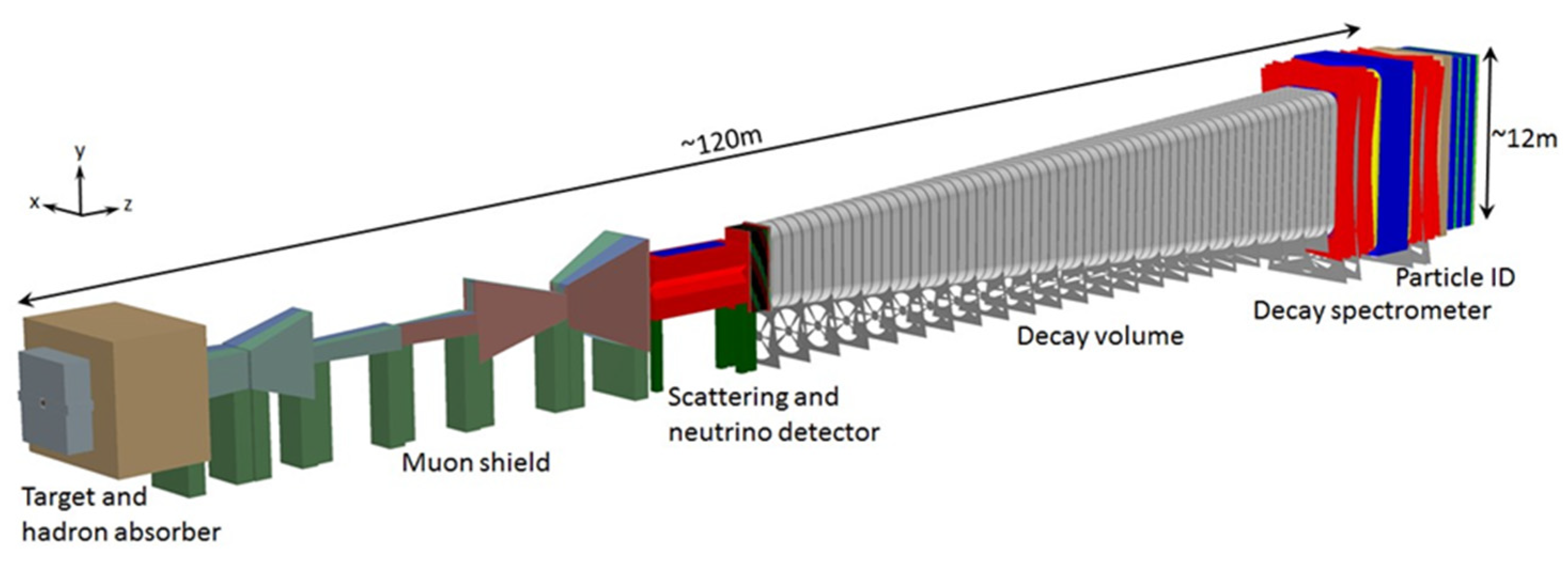

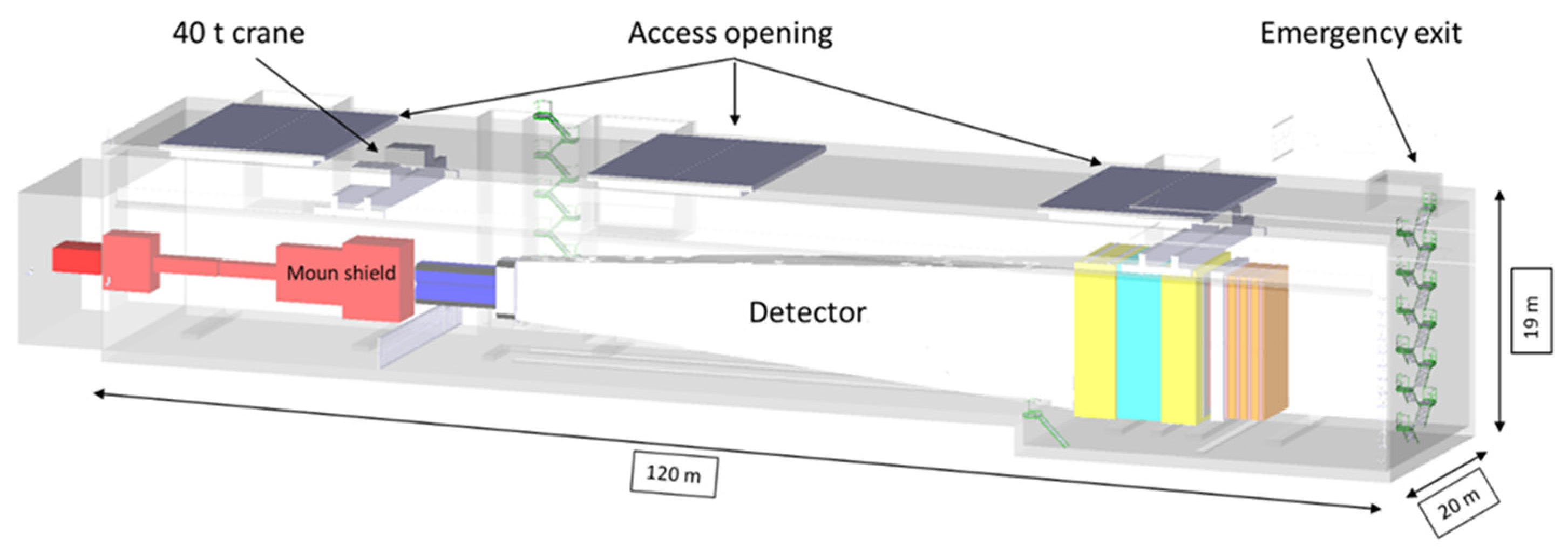

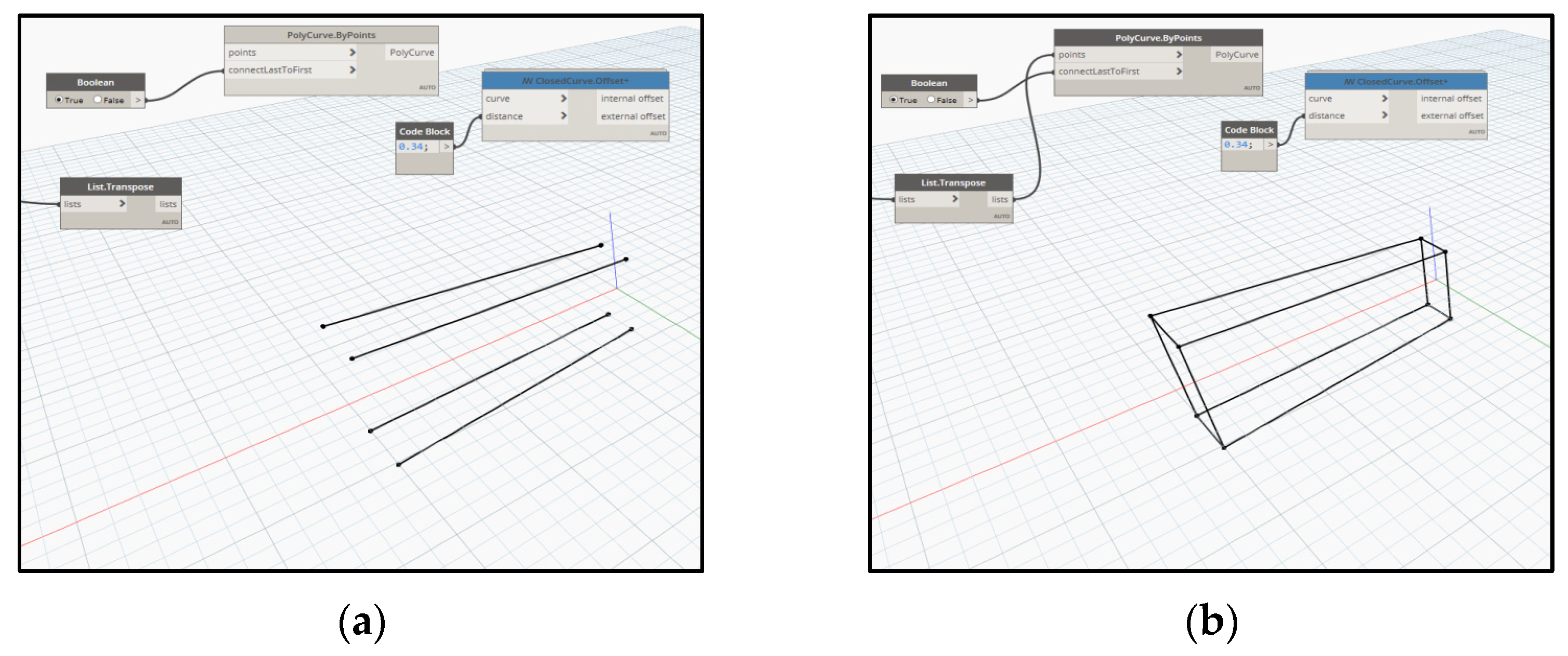
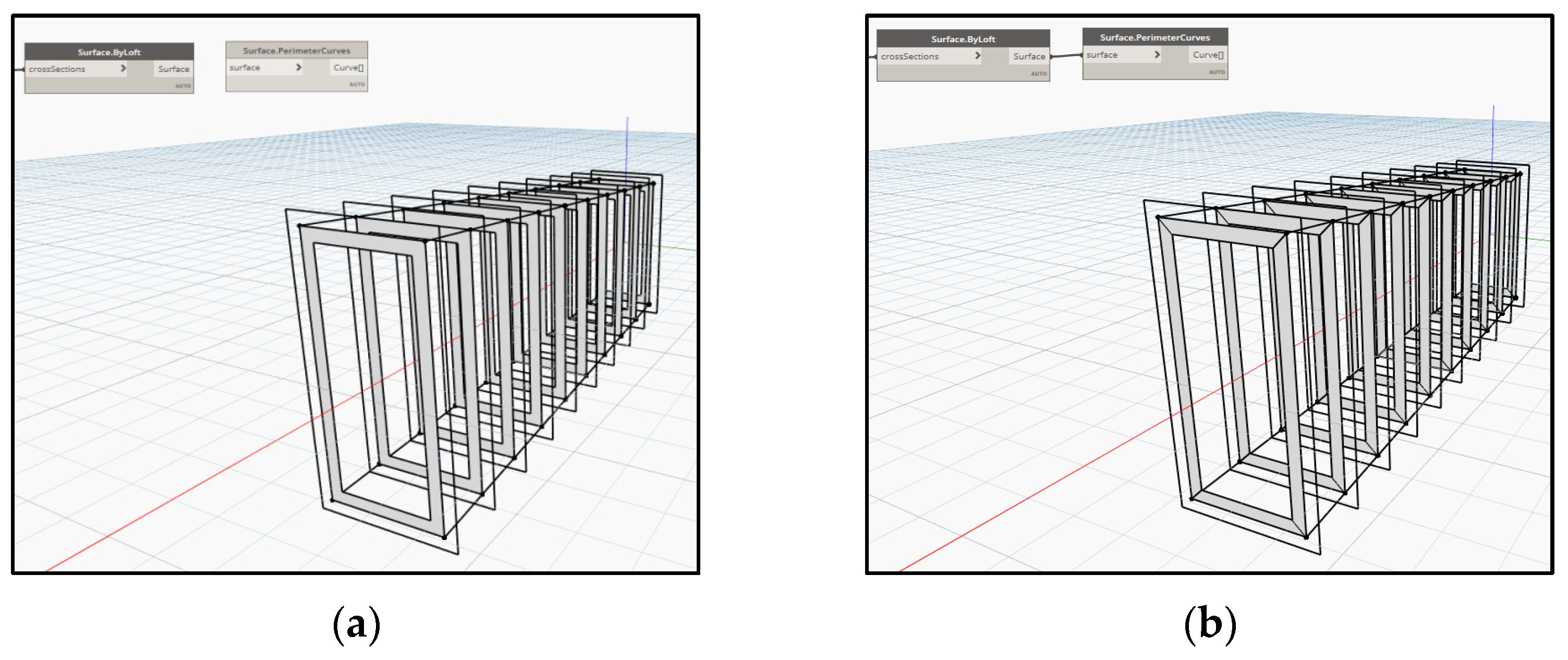
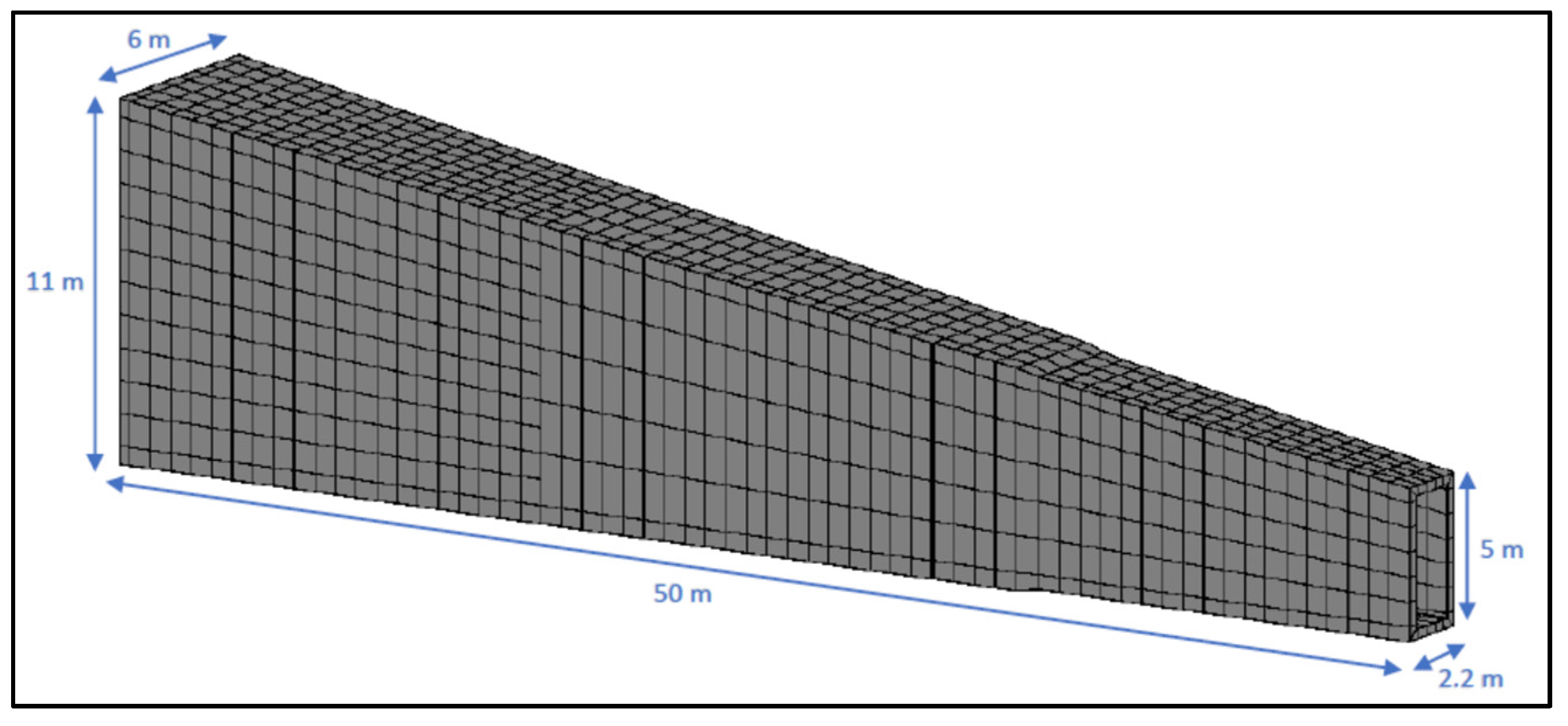
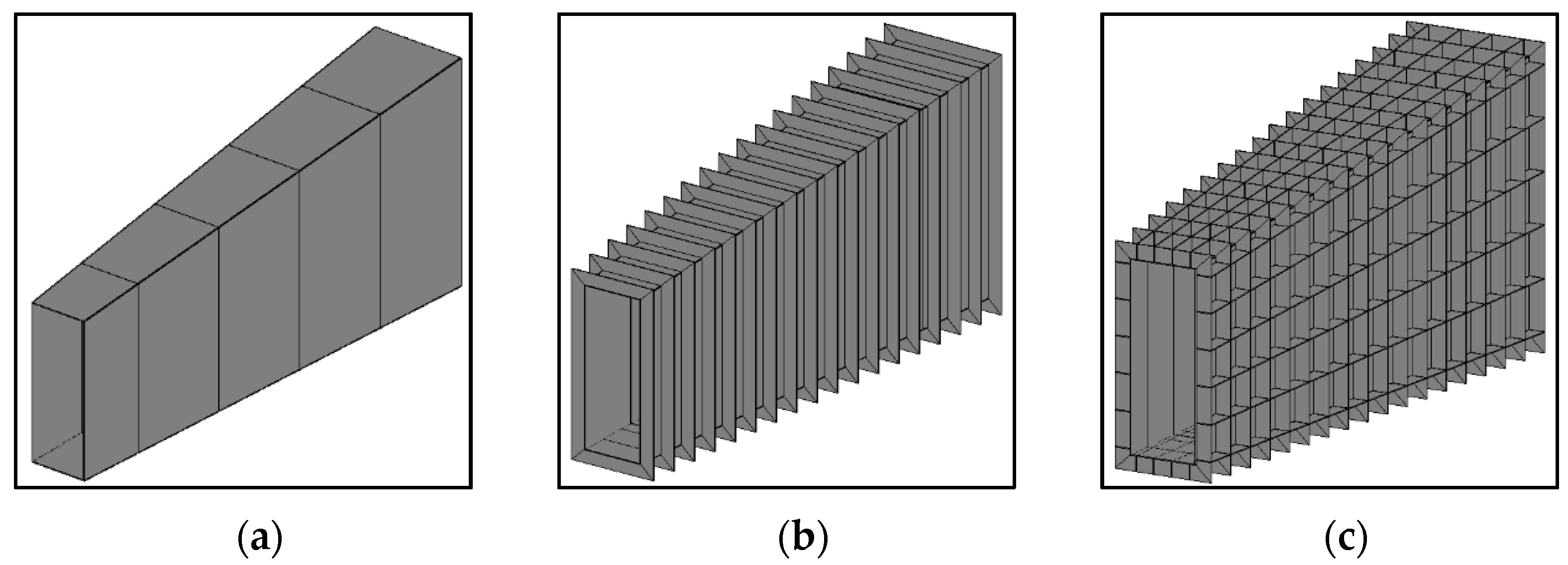




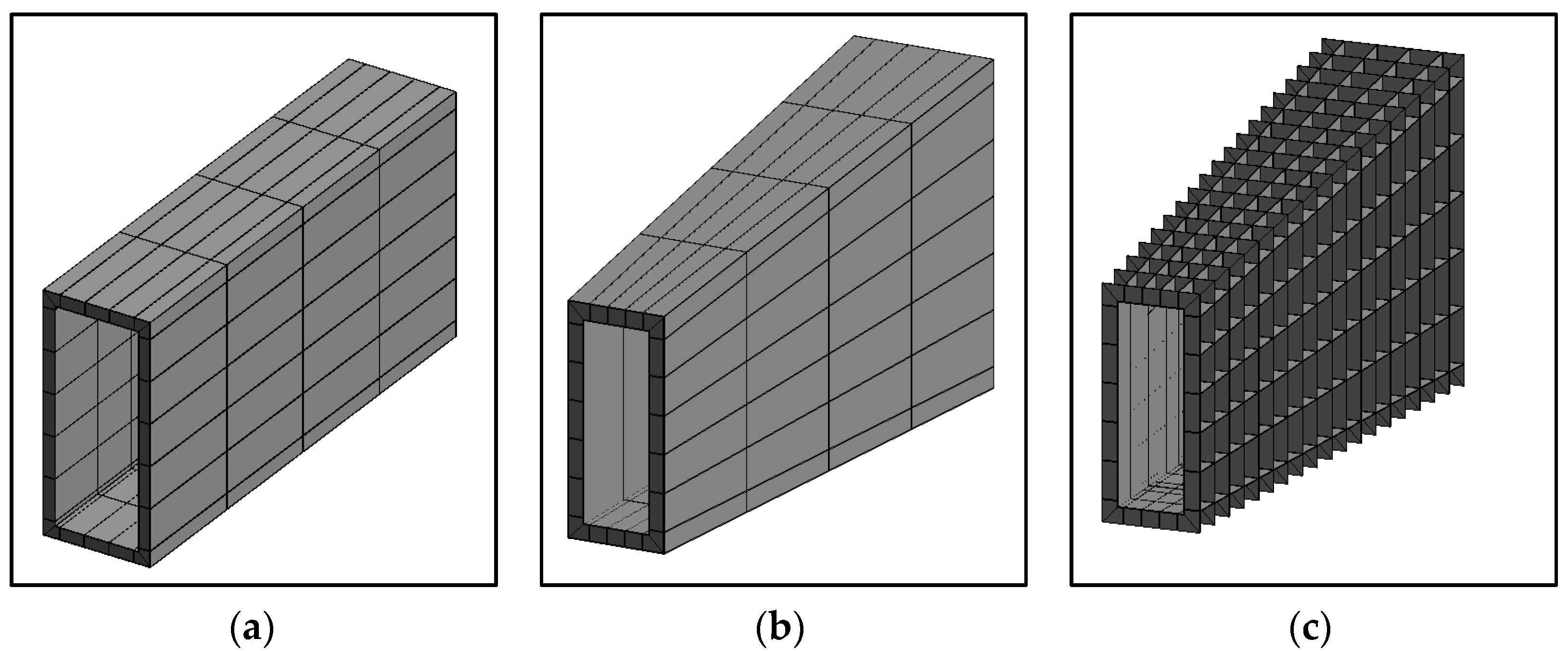

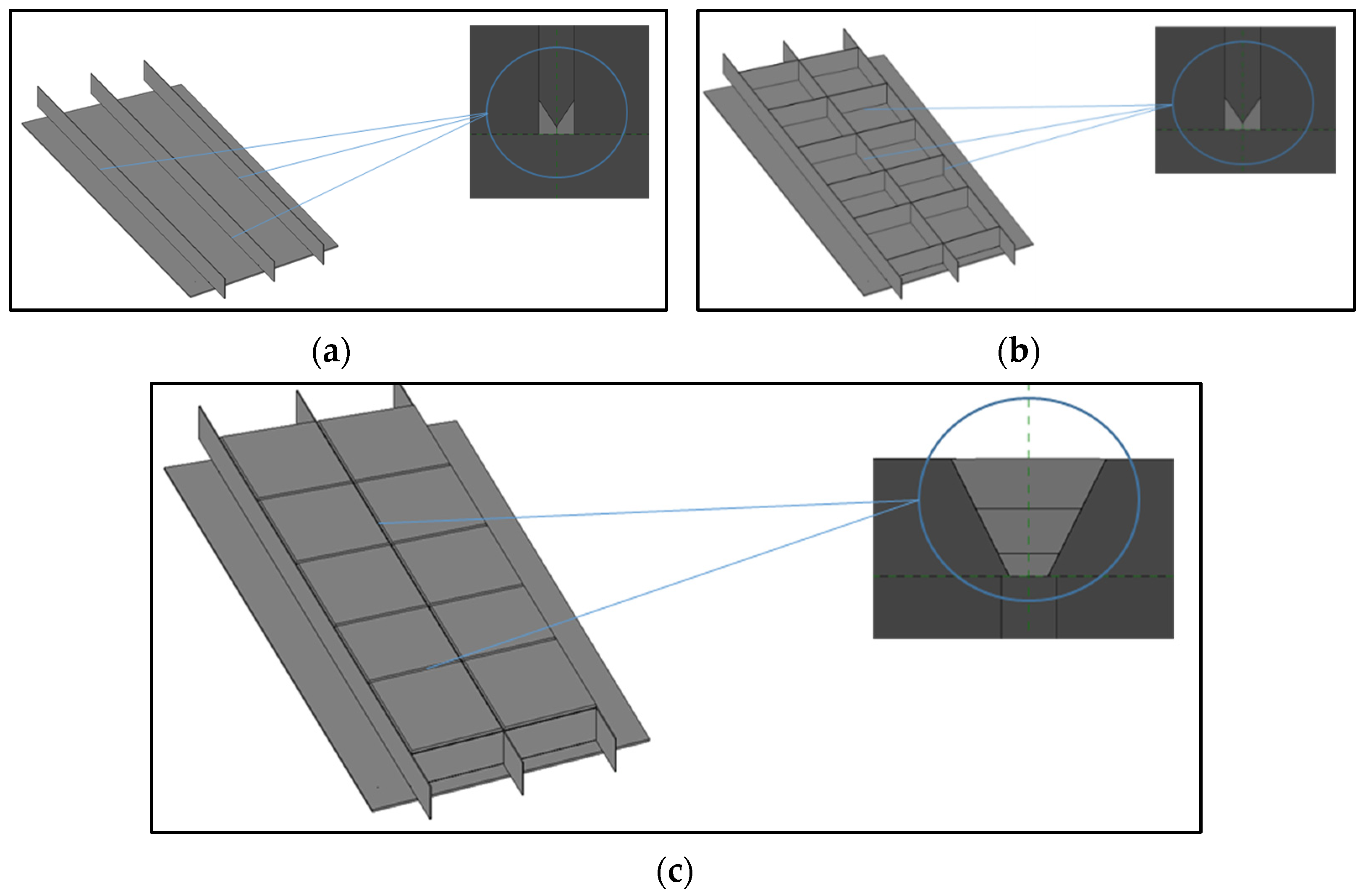

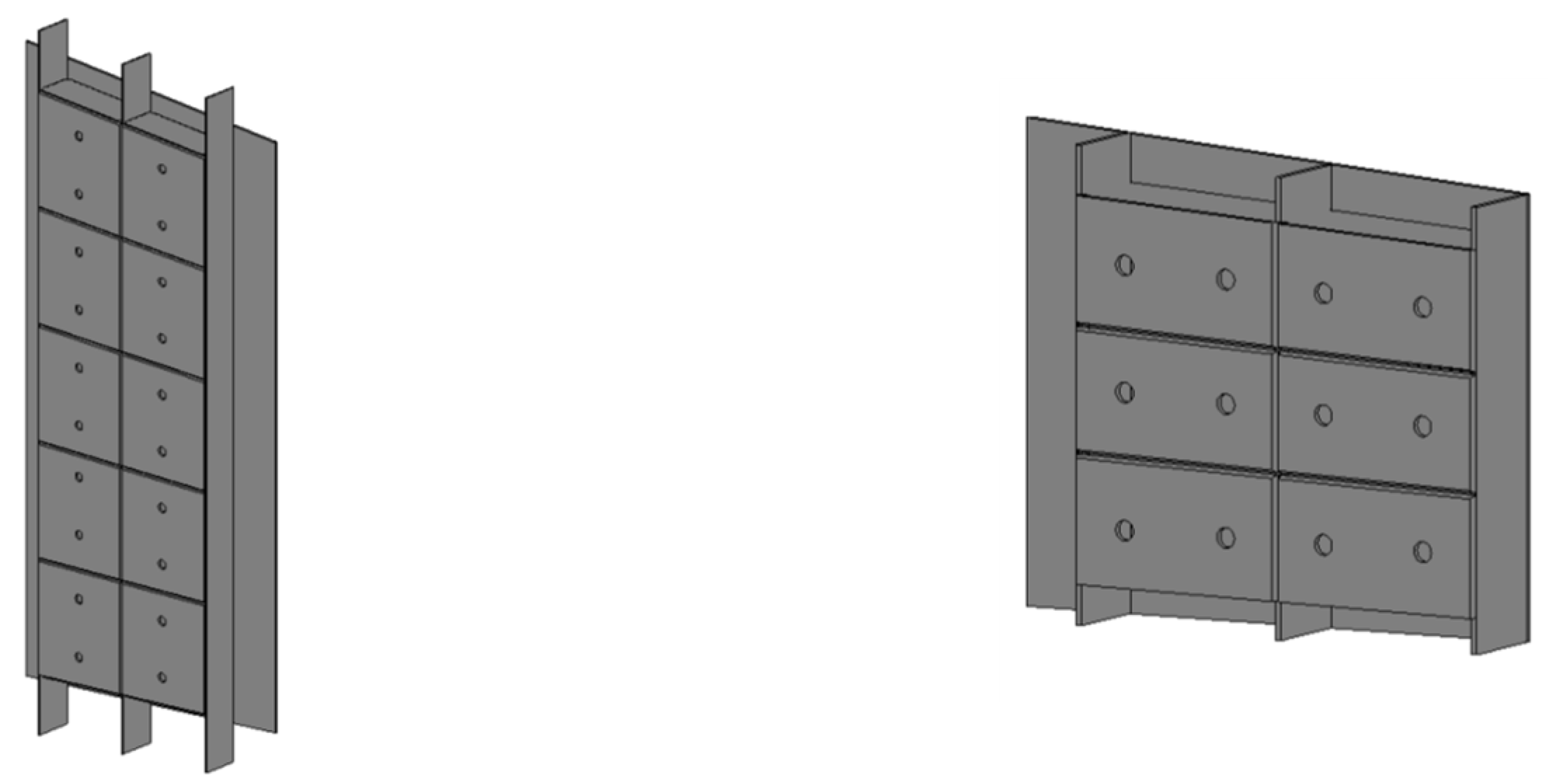
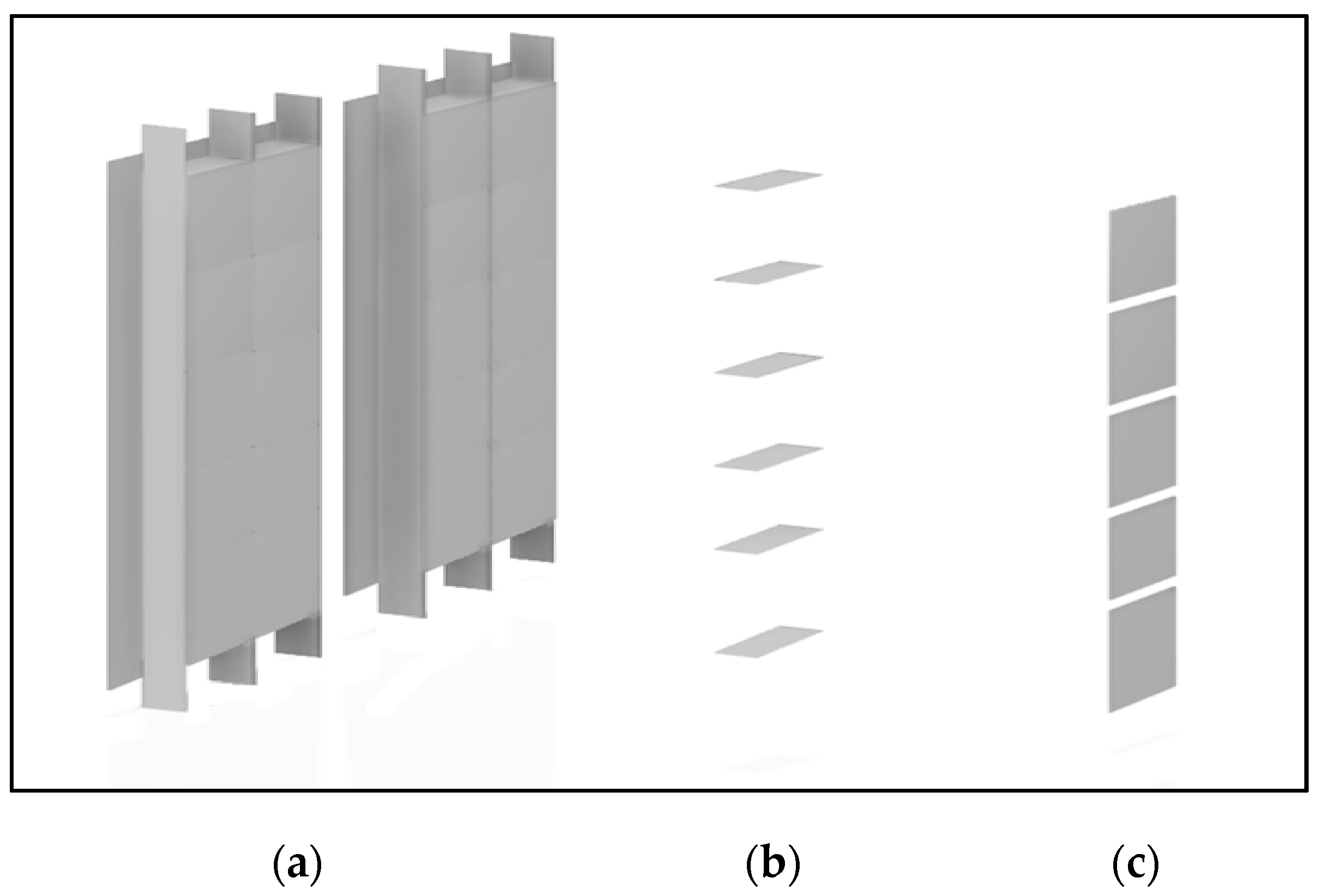


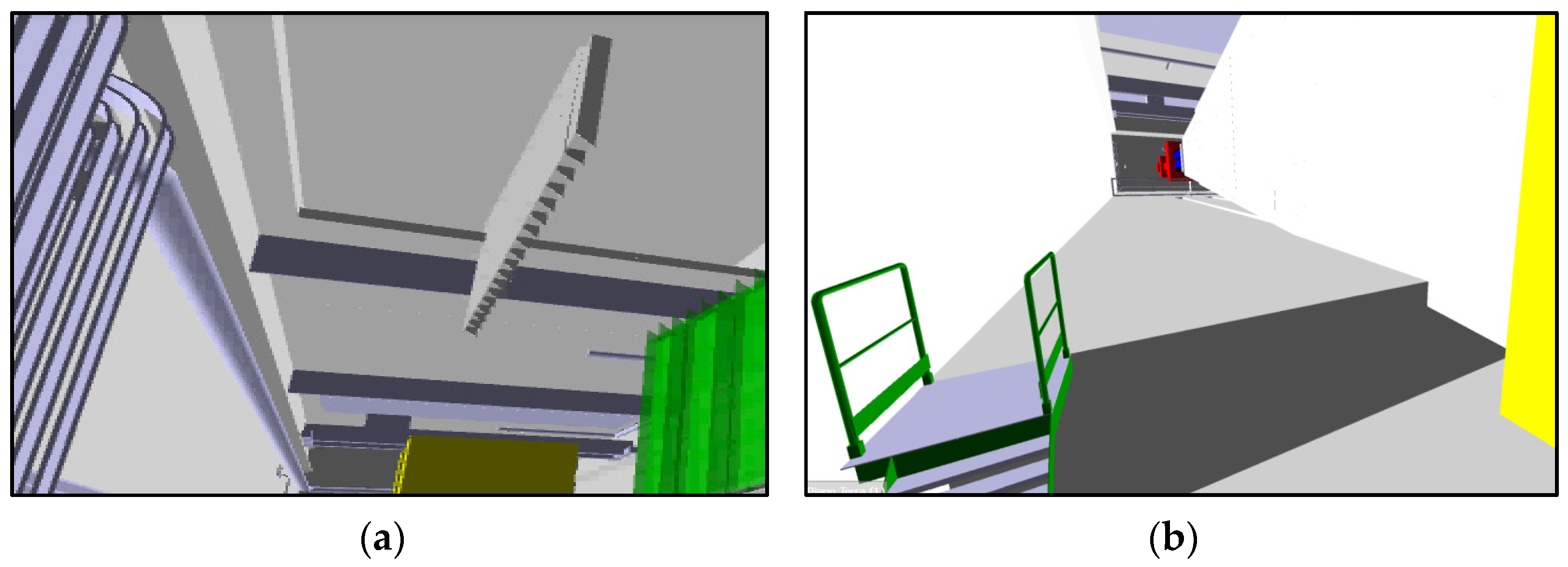
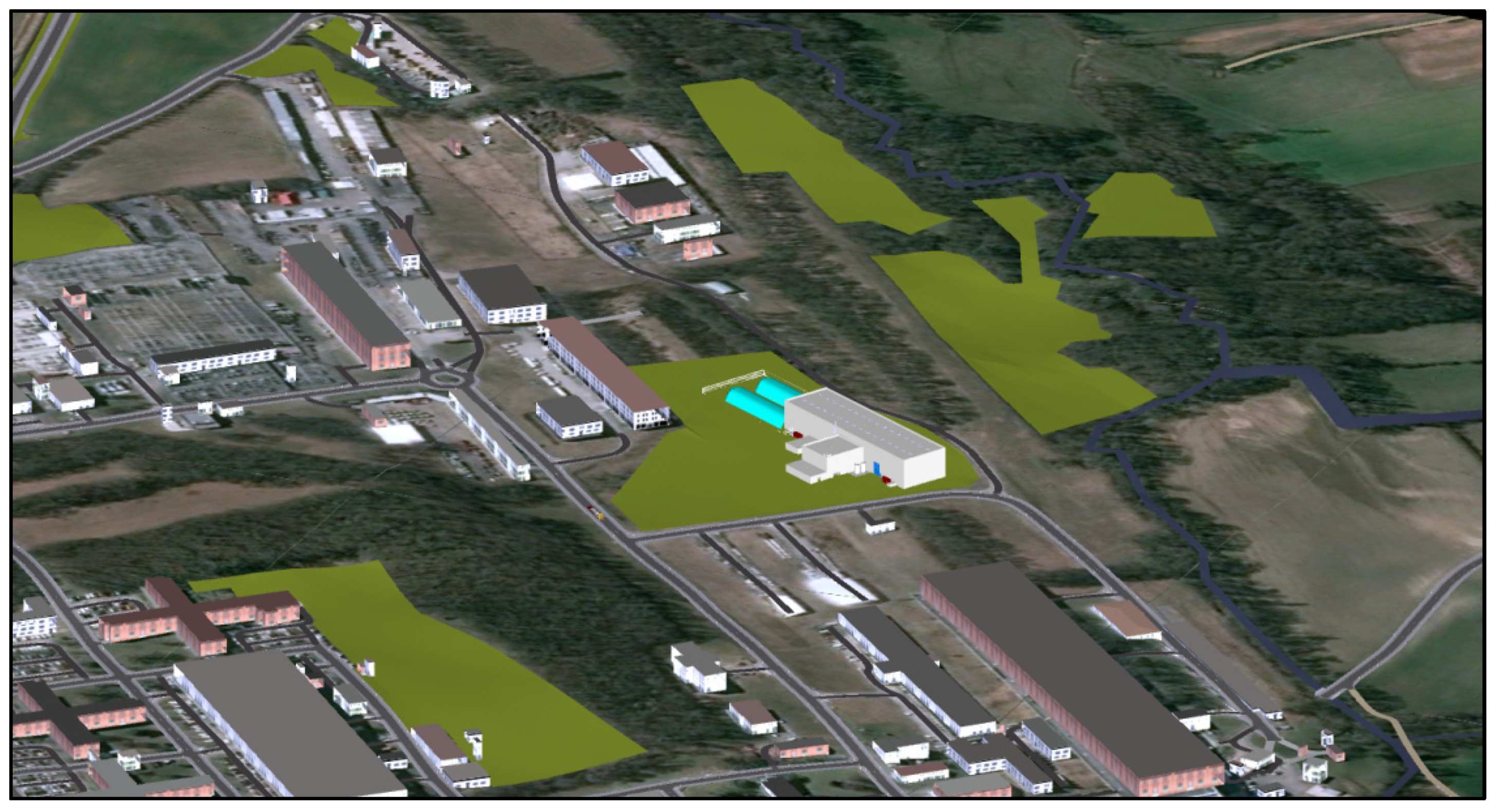
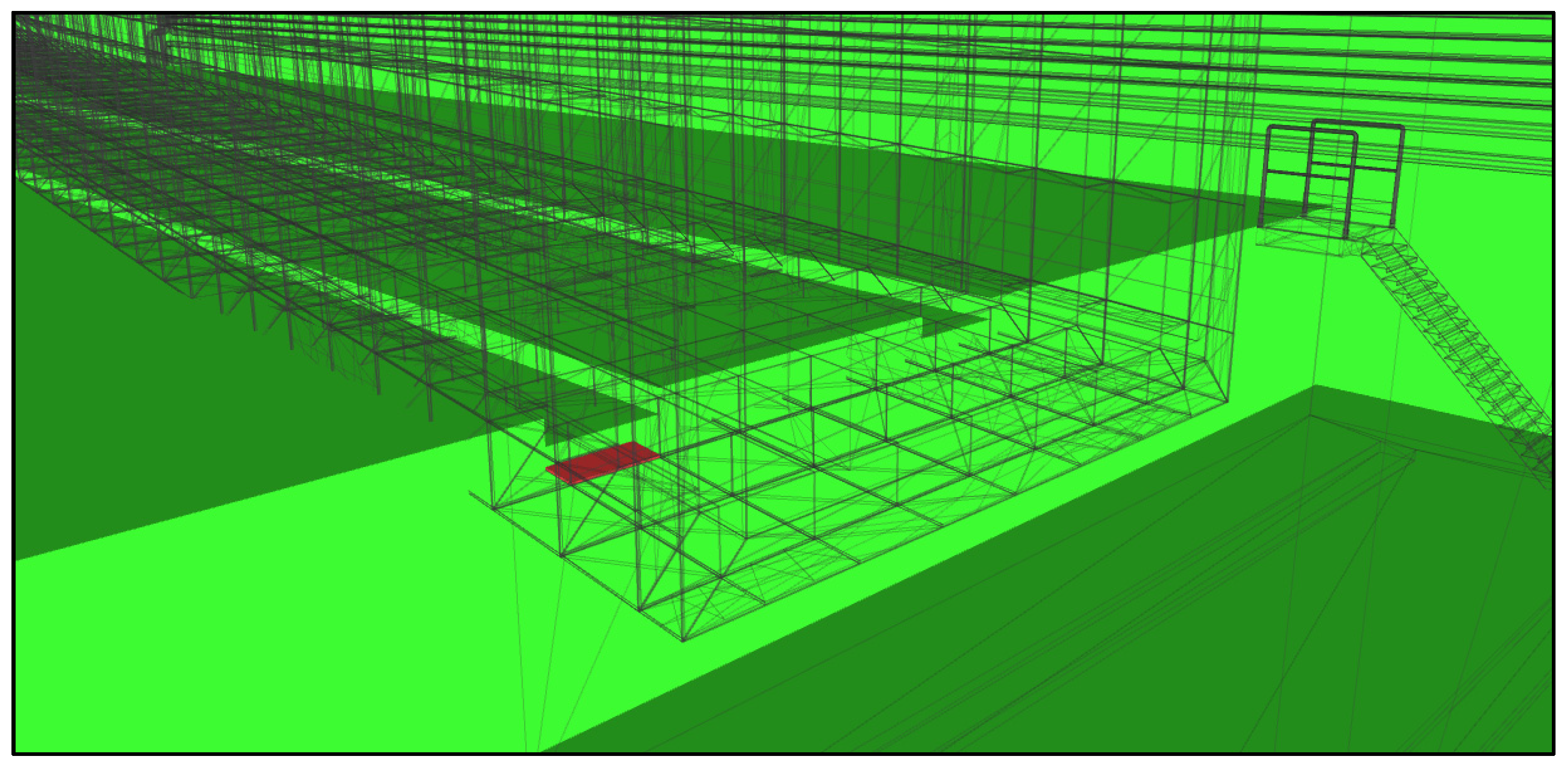
| Total Numbers of Elements | 3748 | ||
|---|---|---|---|
| Element ID | Element Name | Area (m2) | Volume (m3) |
| 300519 | Internal_Panel_RG_1 | 9.04 | 0.18 |
| 300772 | Internal_Panel_RG_2 | 11.54 | 0.23 |
| 301263 | Internal_Panel_RG_3 | 12.32 | 0.24 |
| 301832 | Internal_Panel_RG_4 | 13.09 | 0.26 |
| 302334 | Internal_Panel_RG_5 | 13.87 | 0.27 |
| 302934 | Internal_Panel_RG_6 | 14.64 | 0.29 |
| 305528 | Internal_Panel_LF_2 | 11.54 | 0.23 |
| 306218 | Internal_Panel_LF_3 | 12.32 | 0.24 |
Publisher’s Note: MDPI stays neutral with regard to jurisdictional claims in published maps and institutional affiliations. |
© 2022 by the authors. Licensee MDPI, Basel, Switzerland. This article is an open access article distributed under the terms and conditions of the Creative Commons Attribution (CC BY) license (https://creativecommons.org/licenses/by/4.0/).
Share and Cite
Salzano, A.; Miano, A.; Prota, A.; Jacobsson, R. The Use of the BIM Approach from the Conceptual Planning to the Construction Phase: The Case Study of the SHiP Experiment. Designs 2022, 6, 48. https://doi.org/10.3390/designs6030048
Salzano A, Miano A, Prota A, Jacobsson R. The Use of the BIM Approach from the Conceptual Planning to the Construction Phase: The Case Study of the SHiP Experiment. Designs. 2022; 6(3):48. https://doi.org/10.3390/designs6030048
Chicago/Turabian StyleSalzano, Antonio, Andrea Miano, Andrea Prota, and Richard Jacobsson. 2022. "The Use of the BIM Approach from the Conceptual Planning to the Construction Phase: The Case Study of the SHiP Experiment" Designs 6, no. 3: 48. https://doi.org/10.3390/designs6030048
APA StyleSalzano, A., Miano, A., Prota, A., & Jacobsson, R. (2022). The Use of the BIM Approach from the Conceptual Planning to the Construction Phase: The Case Study of the SHiP Experiment. Designs, 6(3), 48. https://doi.org/10.3390/designs6030048








